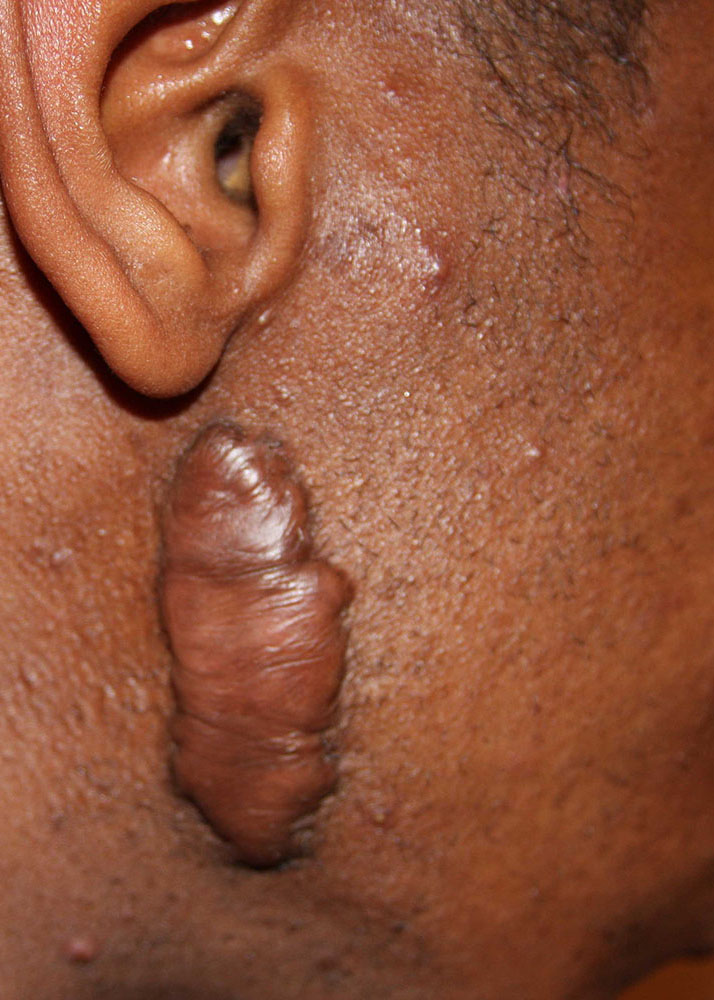Keloids And Hypertrophic Scars In Kampala
We specialize in the treatment and management of keloids and hypertrophic scars, helping you achieve smoother and healthier skin. These types of scars can be raised, thick, and sometimes painful, affecting both appearance and comfort. If untreated, they may continue to grow or become more noticeable over time.

What Are Keloids and Hypertrophic Scars?
Keloids
Keloids are raised, thickened scars that grow beyond the original wound area. They can appear red, pink, or dark, depending on skin tone. Unlike regular scars, keloids do not flatten over time and may continue growing. They often develop after surgical procedures, burns, acne, ear piercings, or injuries.
Hypertrophic Scars
Hypertrophic scars are thick, raised scars but remain within the boundary of the original wound. They may fade and flatten over time but can still cause discomfort or itchiness.
Symptoms of Keloids & Hypertrophic Scars
- Raised, firm, or thickened skin over a wound
- Pink, red, dark, or shiny appearance
- Itching, tenderness, or pain
- Gradual growth in size (for keloids)
- Restricted movement if located over joints
Our Treatment Options
1. Steroid Injections
Corticosteroid injections help to reduce inflammation, flatten raised scars, and relieve itching or discomfort.
2. Laser Therapy
Advanced laser treatments help break down excess scar tissue, making the scar smoother and less noticeable.
3. Cryotherapy (Freezing Treatment)
For small keloids, freezing with liquid nitrogen can help shrink and soften the scar.
4. Surgical Removal
For severe keloids, surgical excision can be performed, often combined with other treatments to prevent regrowth.
5. Silicone Gel Sheets & Creams
Medical-grade silicone gel sheets help to flatten and soften scars over time.
6. Pressure Therapy
Wearing pressure dressings after keloid removal can help prevent recurrence.
7. Radiotherapy (for Severe Cases)
In rare cases, low-dose radiation therapy may be recommended to reduce keloid regrowth after removal.
Why Choose Derma Skin Clinic for Scar Treatment?
- Expert Dermatologists with experience in keloid and hypertrophic scar management.
- Advanced Treatments using the latest medical technology.
- Customized Care Plans tailored to your skin type and scar severity.
- Effective & Long-Term Solutions to prevent regrowth and improve skin texture.
Book a Consultation Today
If you have keloids or hypertrophic scars that affect your confidence or cause discomfort, Derma Skin Clinic in Kampala offers expert treatment options to help you achieve smoother skin.

